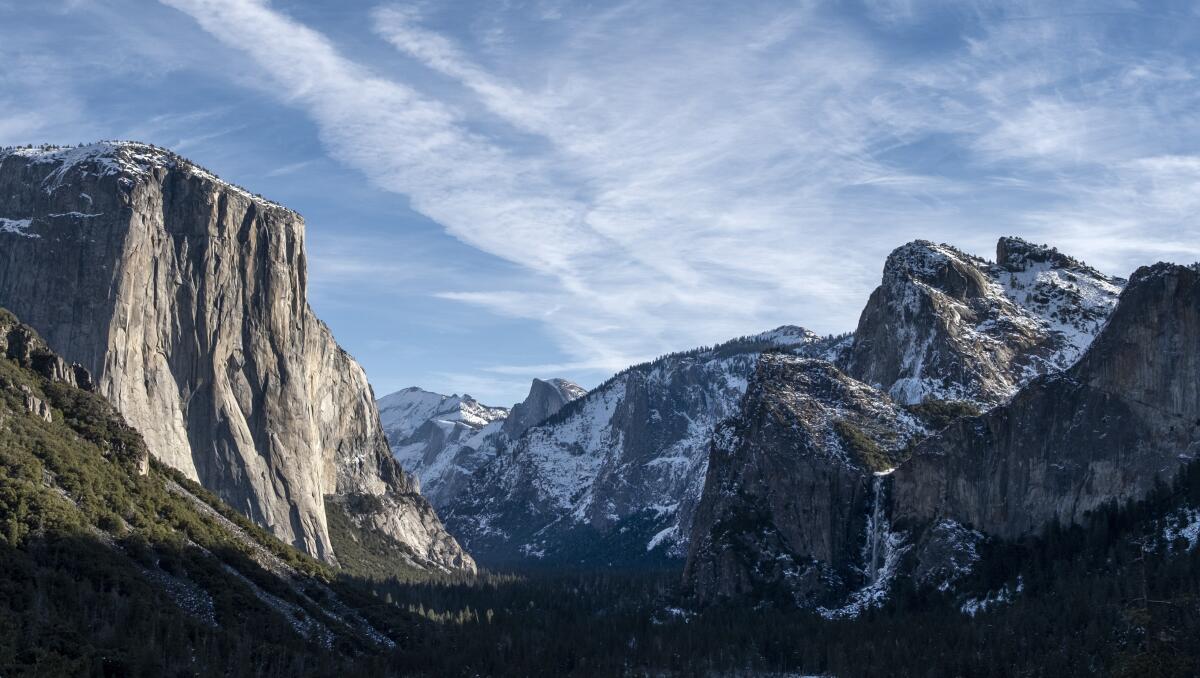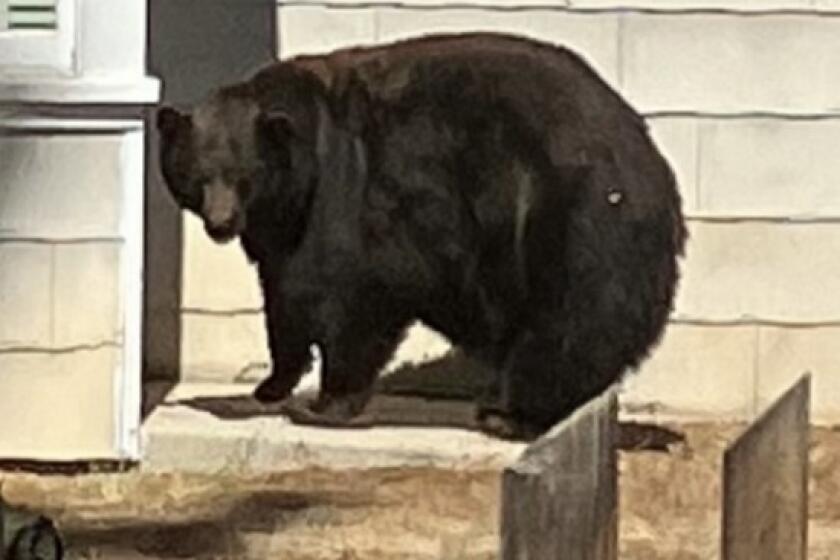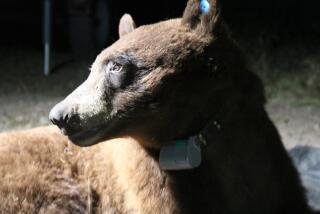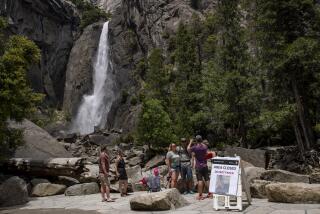Black bears are also scaling Yosemite’s Half Dome: What to do if you meet up

Climbers who summit Yosemite’s Half Dome can expect panoramic views of the national park’s luscious valley — but now park rangers say they might also spot traces of black bears, or even the animal itself.
Park rangers recently found evidence pointing to the presence of a black bear at the top of Half Dome, Yosemite officials said. The animals are natural climbers and, unlike people, do not need 425 feet of cable to scale the quartz rock formation’s 46-degree angle.
“This observation serves as a good reminder that bear safety applies EVERYWHERE in Yosemite,” park officials said on Facebook. “For the safety of people and animals alike, keep your friends close and your food closer.”
Yosemite officials reminded visitors to keep smelly objects like food or sunscreen locked away in lockers or canisters. On the trail, hikers should keep backpacks and other items within reach lest they be ransacked by bears or the Half Dome ground squirrels.
Bear encounters are not uncommon in Yosemite, which is home to an estimated 300 to 500 black bears. The animals usually cause property damage or snatch food. People are rarely injured, and no one has died of a bear attack in Yosemite, according to the park service.
As of July, officials have recorded 10 incidents involving bears in Yosemite, with all but one occurring in a residential area, according to the park’s bear activity log.
One bear, on a jag this spring, broke into multiple unlocked vehicles. Another found its way inside an unsecured home.
Visitors also encounter the creatures on the road. At least one bear has been struck by a vehicle in Yosemite this year, according to the park. Collisions are noted as one of the leading causes of death for bears in Yosemite, according to the organization Keep Bears Wild.
Through late July through mid-August, the Bear League has seen more bears hit “than we’ve ever had at that time.”
Overall, encounters with humans are up by 83% compared with last year. Black bears are active day and night, and more have recently been spotted on the valley floor, park officials said.
Bears tend to avoid humans, but there are critical tips to stay safe in case of an encounter.
If a bear enters a trail, campground, picnic area or parking lot, officials recommend scaring the animal away by yelling loudly and aggressively until it leaves. People can stand close together to appear larger but should not surround the bear. Pepper spray is not allowed in Yosemite.
If the bear won’t go, pack everything and leave, officials said. Throwing food at the creature or leaving nourishment behind will encourage its behavior and could make it aggressive with humans; in these cases, the bear might be euthanized. And, although it might go without saying, rangers advise people not to try getting their food back from a bear.
Visitors who encounter a bear in undeveloped areas of Yosemite should keep a distance of at least 20 yards. Black bears may show dominance by bluff charging, especially when cubs or food are involved, park officials said.
Half Dome in Yosemite National Park has long been a California icon, serving as a muse for legendary photographer Ansel Adams, and eventually becoming his resting place.
The rock surface, which some compare to a football helmet or a broken bowling ball, is framed by a granite monolith, El Capitan, and a collection of cliffs known as Cathedral Rocks.
Visitors need to obtain a permit to scale the Half Dome. Hiking the trail can be dangerous, and the park service recommends that it be done only in summer. Rangers put up removable steel cables every season to help climbers ascend the last few hundred feet to the top.
Hiking to the summit requires climbing at least 14 miles while gaining 4,800 feet in elevation. Only 300 people can visit the Half Dome Trail each day.
Hikers who see a bear, no matter where it is or what it’s doing, are asked to call (209) 372-0322 or email the park service.
More to Read
Sign up for Essential California
The most important California stories and recommendations in your inbox every morning.
You may occasionally receive promotional content from the Los Angeles Times.












